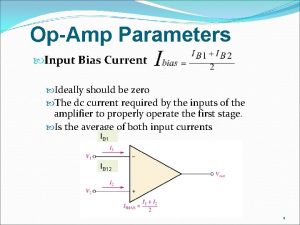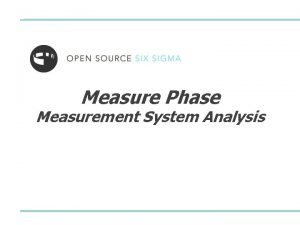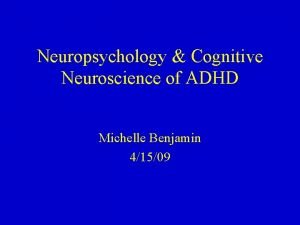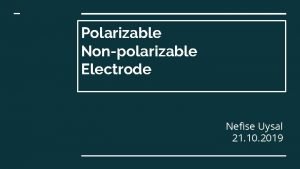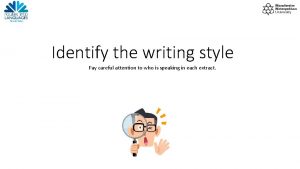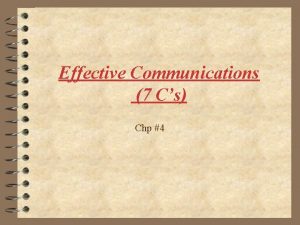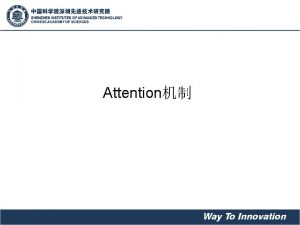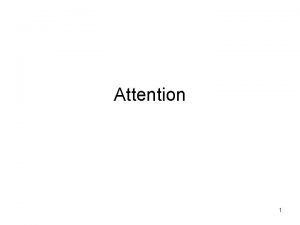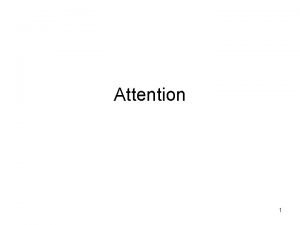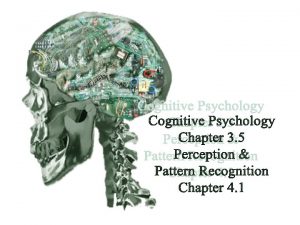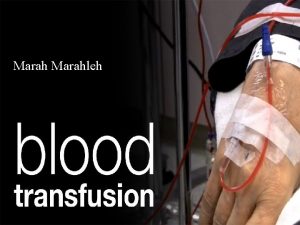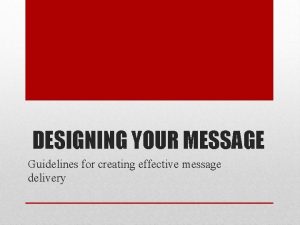Designing the message Ideally message should gain attention


















- Slides: 18

Designing the message Ideally, message should gain attention, hold interest, arouse desire, & elicit action (AIDA). In practice, few messages take consumer all way from awareness thru purchase Formulating message = solving 4 problems: what to say (message content), how to say it logically (message structure), how to say it symbolically (message format), who should say it (message source)

Message content What to say to target audience to produce desired response? Process =variously called the appeal, theme, idea or unique selling proposition (USP). Formulate some kind of benefit, motivation, identification, or reason why audience should think about or investigate the product. 3 types of appeals: Rational Emotional Moral Informational vs. Transformational appeals

Rational appeals Appeal to audience's self-interest. Show that product will produce the claimed benefits. Ex: messages demonstrating a product's quality, economy, value or performance. Industrial buyers = most responsive to rational appeals knowledgeable about product class, trained to recognise value, & accountable to others Consumers buying big-ticket items tend to gather information & compare alternatives will respond to quality, economy, value, & performance appeals.

Emotional appeals Stir up -ve or +ve emotions to motivate purchase Fear, guilt shame appeals in getting people to: do things they taking annual health check-up) should do (brushing teeth, stop doing things they shouldn't (smoking, overimbibing, drug abuse, overeating) But if audience anticipates too much fear in message, they will avoid it. +ve emotional appeals = humour, love, pride, joy. Humour attract more attention & create more liking & belief in sponsor but can also detract from comprehension.

Moral appeals Directed to sense of what is right & proper often used to exhort people to support social causes, (cleaner environment, better race relations, equal rights for women, aid to disadvantaged) less used for everyday products. Some believe messages are maximally persuasive when are moderately discrepant with what audience believes: Messages that only state what audience believes attract less attention & at best only reinforce audience beliefs. If messages are too discrepant with audience's beliefs counterargued in audience's mind & disbelieved. Challenge = design a message that is moderately discrepant & avoids the 2 extremes.

The Importance of Taglines 6

Message structure Message's effectiveness depends on structure & content Conclusion drawing should communicator draw definite conclusion for audience or leave it to them? Recent research suggests that best ads ask questions & allow readers & viewers to form own conclusions. Conclusion drawing might cause -ve reactions: If communicator seen as untrustworthy, audience might resent attempt to influence them. If issue is simple or audience is intelligent, might be annoyed at attempt to explain the obvious. If issue is highly personal, audience might resent communicator's attempt to draw a conclusion.

Conclusion drawing Drawing too explicit a conclusion can limit a product's acceptance. If Ford hammered away on the point that the Mustang was for young people, this strong definition might have blocked other age groups who were attracted to it. Stimulus ambiguity can lead to a broader market definition and more spontaneous uses of certain products. Conclusion drawing seems better suited for complex or specialised products where a single and clear use is intended.

One- or two-sided arguments Should communicator only praise product or also mention some of its shortcomings? One-sided messages work best with audiences that are initially predisposed to communicator's position Two-sided arguments work best with audiences that are opposed. Two-sided messages tend to be more effective with better educated audiences. Two-sided messages tend to be more effective with audiences that are likely to be exposed to counterpropaganda.

Order of presentation Should communicator present strongest arguments first or last? One-sided message presenting strongest argument first establishes attention & interest Anticlimactic presentation in newspapers & other media where audience does not attend whole message Two-sided message present +ve argument first (primacy effect) or last (recency effect)? If audience initially opposed, might start with other side's argument to disarm audience & allow concluding with strongest argument.

Message format In print ad, decide on headline, copy, illustration & colour. For radio, careful choice of words, voice qualities (speech rate, rhythm, pitch, articulation) & vocalisations (pauses, sighs, yawns). For television or in person, all above elements + body language (nonverbal clues) to be planned (facial expressions, gestures, dress, posture, hairstyle). For message carried by the product or its packaging colour, texture, scent, size & shape.

Colour plays an important role in food preferences. When women sampled four cups of coffee that had been placed next to brown, blue, red and yellow containers (all the coffee was identical, unknown to the women), 75% felt that the coffee next to the brown container tasted too strong; nearly 85% judged the coffee next to the red container to be the richest; nearly everyone felt that the coffee next to the blue container was mild and that the coffee next to the yellow container was weak.

Message source Messages delivered by attractive sources achieve higher attention & recall. Celebrities often used as spokespeople (Michael Jordan for Nike) likely to be effective when they personify a key product attribute. Spokesperson should have credibility to be more persuasive. Pharmaceutical companies doctors to testify about products' benefits. Antidrug crusaders will use ex-drug addicts as ex-addicts have higher credibility than teachers.

Source credibility 3 factors most often identified: Expertise specialised knowledge communicator possesses to back the claim. Doctors, scientists, 1 professors rank high on expertise in their respective fields. Trustworthiness how objective & honest the source is perceived to be. Friends are trusted more than strangers or salespeople Likeability source's attractiveness to the audience candour, humour, & naturalness. Most highly credible source = person who scores high on all 3 dimensions.

Congruity If person has +ve attitude toward source & message, or ve attitude toward both congruity. What if person holds one attitude toward source & opposite toward message? Osgood & Tannenbaum « attitude change will take place in the direction of increasing the amount of congruity between the two evaluations » . If one hears likeable celebrity praise brand that one dislikes will respect celebrity somewhat less or respect brand somewhat more. If one encounters thecelebrity praising other disliked brands, will eventually develop -ve view of the celebrity & maintain & -ve attitude toward brands. Communicators can use good image to reduce -ve feelings toward brand but in process lose esteem with audience

Communication Channels 2 broad types: personal & nonpersonal Personal communication channels Involve 2 or more persons communicating directly with each other. --> opportunities for individualising the presentation & feedback. Advocate channels consist of company salespeople contacting buyers in the target market. Expert channels consist of independent experts making statements to target buyers. Social channels consist of neighbours, friends, family members, and associates talking to target buyers.

Stimulating Personal Influence Channels Identify influential individuals and devote extra attention to them Create opinion leaders Use community influentials in testimonial advertising Develop advertising with high “conversation value” Develop WOM referral channels Establish an electronic forum Use viral marketing 17

Non-personal channels Media Sales Promotions Events and experiences Public Relations 18
 Ideally the input bias current should be__________ . *
Ideally the input bias current should be__________ . * Ideally the output for measure phase should be
Ideally the output for measure phase should be Michelle benjamin phd
Michelle benjamin phd Optional and mandatory relationship in erd
Optional and mandatory relationship in erd Ideally insurable loss exposure
Ideally insurable loss exposure Ideal polarizable electrode
Ideal polarizable electrode And can it be that i should gain
And can it be that i should gain Designing a message
Designing a message Pay careful attention to your own work
Pay careful attention to your own work What means convey the message by using fewest words
What means convey the message by using fewest words Types of positive routine message
Types of positive routine message Một số thể thơ truyền thống
Một số thể thơ truyền thống Trời xanh đây là của chúng ta thể thơ
Trời xanh đây là của chúng ta thể thơ ưu thế lai là gì
ưu thế lai là gì Tư thế ngồi viết
Tư thế ngồi viết Gấu đi như thế nào
Gấu đi như thế nào Thẻ vin
Thẻ vin Tỉ lệ cơ thể trẻ em
Tỉ lệ cơ thể trẻ em Cái miệng nó xinh thế
Cái miệng nó xinh thế
